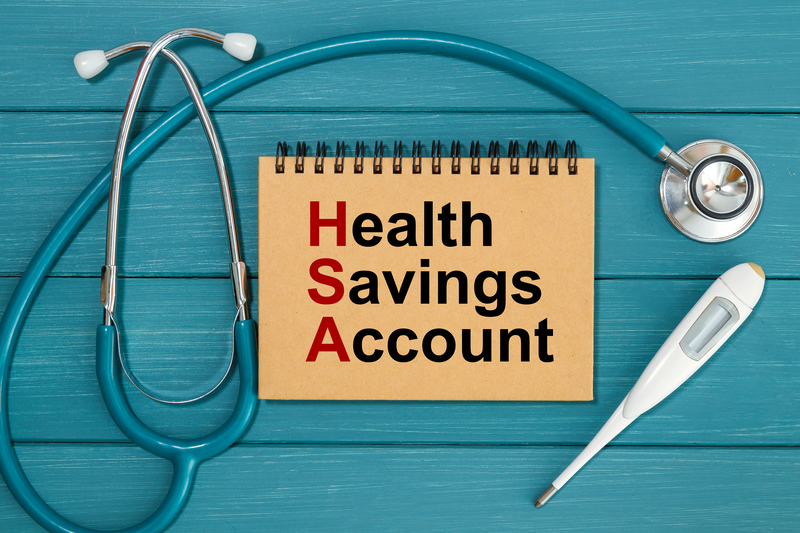Category: Finance
Paying for Early Childhood Intervention Services
October 1, 2023

Over three million children in the United States had a reported disability according to the 2019 U.S. Census, and that number has risen 0.4% since 2008. Children experiencing developmental delays, not reaching developmental milestones, or those at risk may be eligible for early intervention services and supports.
When to Screen for Developmental Delays
If a child is born prematurely or with a genetic condition, then that child may qualify for early intervention as soon as birth. Early screening is part of the services that should be offered while parents are in the hospital for their child’s birth. However, if a parent becomes concerned about their child’s development after birth or notices any changes, they should refer their child for an early intervention evaluation. Eligibility for services is based on an evaluation of a child’s skills and abilities. A doctor’s referral is not necessary for an evaluation. It’s important for parents to educate themselves on which milestones their children should be reaching and not rely completely on their doctor’s recommendations; it is parents who spend the most time with their children, so they may notice something that a pediatrician won’t catch during a routine check-up. Emma Fitzsimmons, a New York mom who claims early intervention saved her son’s life, tells other parents, “If you’re worried that your child has delays, I would encourage you to seek out Early Intervention services and to ask for recommendations to find the best therapists in your area and a good service coordinator, the person who oversees your case.”
Know What Your State Offers
If eligible for early intervention, children may receive services to help with physical skills (crawling and walking), cognitive functions (thinking and learning), communication (talking and listening), adaptive skills (eating and dressing), and social-emotional development (play). Services are wide-ranging and can include speech therapy, physical or occupational therapy, psychological services, home visits, nutritional services, audiology (for hearing issues), vision therapy, social work, assistive technology, and even transportation.
The Individuals With Disabilities Education Act, or IDEA, covers early intervention and school-aged services. Under Part C of IDEA, funding is made available to each state and requires services to be made available to eligible children with disabilities. While all states offer early intervention, the screening processes and services offered vary state by state. The first step in finding out what your child may qualify for is learning about what your state offers. The CDC offers links for each state in order to learn about the benefits your state offers. Each state has its own guidelines around how families qualify, but generally, a child must exhibit a developmental delay or have been diagnosed with a specific health condition that is known to lead to delays, such as a genetic disorder. The Early Childhood Technical Assistance Center (or ECTA) also outlines the services each state offers. In some states, children may be eligible for services if they are at risk and not yet exhibiting any delays, such as having been born at a low weight. If a child is found eligible for services, a care team will develop an Individualized Family Service Plan (IFSP), which will outline the services a child will receive and the desired outcomes for those services. For instance, physical therapist Tonya McCool explains, “If a child presents with a delay that limits their abilities to complete age-appropriate milestones, a provider will assist by guiding the child into appropriate positions, providing them opportunities to experience new opportunities or helping them try new things so that their families can continue to work with them throughout the week to meet their goals.”
Who Pays for Early Intervention Services?
Under IDEA Part C, Child Find services, which include the initial referral, evaluations, the development of the IFSP, and service coordination must be made free to families, but depending on your state’s policies, some services may be provided at a cost or on a sliding scale. In addition to the federal education funds provided through IDEA, Medicaid and private insurance can also help cover the costs of interventions, such as speech therapy and hearing services. Finding a provider that is familiar with Early Intervention funding will know best how to help families cover the costs of these services. Although early intervention is mandated by IDEA and designed to meet the needs of children, it often requires a combination of resources to cover the costs of services. The ECTA’s website offers contact information for each state’s lead agency, who will be able to provide parents with the resources they’ll need to secure services and funding. If your child qualifies for interventional services, it will be important to become educated in what services must be provided at no cost to you through IDEA Part C.
What Happens When Services End?
Once a child is three, if they are still experiencing delays or require supports, then services will continue and transition into special education services. These are often provided through a child’s school at no additional cost to you. The age at which a child begins schooling also varies state-by-state, which is why it’s important for families to work with their initial early intervention team in order to ensure children continue receiving the supports they need. When an IFSP is developed, it should include any support for the transition to preschool when a child turns three. Plans should be reviewed every six months, as children change quickly from birth to age three.
Early intervention services can have an enormous impact on a child’s ability to meet developmental milestones. These services are provided not only for a child, but also so that their caregivers have the tools they need to create a healthy environment for their entire family. Insureyouknow.org can help you keep track of medical records, interventional resources, and your child’s IFSP, as well as their progress. When it comes time for your child to start school, having this paperwork organized in one place will help you provide their school with everything they require in order to ensure the necessary continued supports.
Five Things To Know About the Capital Gains Tax
September 15, 2023

It’s never too early to start planning for tax season. While much of what you own will experience depreciation over time, any profit made from something you sell may be subject to the capital gains tax. So if you think you’ll be making a return on a previous investment this year, then you’re going to want to be well-versed in the capital gains tax.
Understanding the Capital Gains Tax
A capital gains tax is a tax on profits made from the sale of assets, such as stocks, businesses, real estate, and other types of investments. When you sell anything and make a profit, the U.S. government views that profit as taxable income. The capital gains tax is calculated by deducting the original cost of the asset from the total sale of that asset. It’s important to understand the capital gains tax guidelines, such as profits made from real estate or collectibles, which come with their own unique rules. Understanding the rules can help you make the best decisions about your capital gains income.
In order to minimize losses and maximize your gains, here are five things to know about the capital gains tax.
The Real Estate Rules
If a person sells their home for $250,000 or less, or a married couple sells their home for $500,000 or less, then they are exempt from the capital gains tax; this exemption is only available once every two years. If you sell your home or any other investment property for more than that but reinvest the money made from the sale into a new property, then you would also be exempt from paying taxes on your real estate gains; this is known as the 1031 exchange. Cory Robinson, financial portfolio manager says, “That’s the beauty of taking gains: You can immediately reinvest.” For a home to qualify as a primary residence, you must have lived in it for at least two years, or two years out of a five year period. It’s important to understand the rules around property sales, so speaking with an advisor is always recommended before selling your home. “Familiarize yourself with the capital gains tax exclusion rules and consult a tax advisor,” says financial analyst Greg McBride. “If the property has been your primary residence for less than 24 months, for example, you may decide to hold off until you’ve reached that threshold to avoid capital gains tax.”
The Difference Between Short and Long-term Capital Gains
Put simply, if you have held any asset for less than a year before selling it, then that asset is considered a short-term capital gain and is subject to a higher capital gains tax; if you own that asset for longer than a year before selling, then your profit is considered a long-term gain and subject to a lower tax rate. This is why selling any asset before you’ve owned it for at least 12 months should be avoided if possible.
Investment and Rental Property Strategies
The rules around investment property are different since their value typically depreciates over time. A 25 percent rate then applies to the gain from selling real estate that depreciated, because the IRS wants to recapture some of the tax breaks you’ve been getting due to depreciation, known as Section 1250 property. If you sell a rental property that you have not lived in for at least two years for over $250,000 (or $500,000 if married), then that property could be subject to not only the depreciation rate but a capital gains tax that is based on your income bracket. One wat to avoid this could be to invest in property in opportunity zones, areas identified as economically disadvantaged, which are tax-free when sold after ten years. Deducting expenses, such as home improvements, repair, and even closing costs, is another way to lower the amount of profit that is subject to the capital gains tax.
Your Income Bracket Determines Your Capital Gains Tax Rate
Tax rates are determined by your tax bracket, so a lot of people will actually pay no capital gains tax on the sale of long-term assets if they fall in the 0% tax rate. For the 2023 tax year, a single person that made up to $44,625, and a married couple that made up to $89,250 jointly would not have to pay any capital gains taxes.
Keep Track of Both Gains and Losses
When an asset is sold for more than what it cost, it results in a capital gain, but when the asset is sold for less than it cost, it results in a capital loss. If you have both gains and losses, it will be important to know your net gain, or your gains minus your losses; only net gains are subject to the capital gains tax. If you only have losses in a given year, then capital losses could actually lower your taxable income. This loss is limited to $3,000 per year per person (or $1,500 if you’re married). If you have an excess of $3,000 in losses, then those losses can actually be carried forward to future tax years.
It’s never a good idea to buy or sell assets solely for tax purposes, but that doesn’t mean you shouldn’t be well aware of the rules around the capital gains tax. Insureyouknow.org can help you store all of your financial records in one place, so that it’s easier for you to keep track of your assets and taxable income. Before selling any investment, it’s important to know the laws unique to your state and speak with an advisor, who will know best what taxes you may be held responsible for. It’s good to know that for many, zero taxes on gains are actually possible.
5 Benefits of Paying Off Your Mortgage Early
August 17, 2023

For many Americans, a home mortgage is one of the heftiest and lengthiest investments they will make in their lifetime. According to the Federal Reserve Bank of New York, mortgages accounted for 71% of combined household debts in 2022. The good news is with proper planning, this stressor can be eliminated. Depending on your financial position, opting to pay off your mortgage early can make a positive impact on your finances. It can simultaneously offer you a sense of peace and stability and provide greater financial freedom.
“Paying off your mortgage is a major milestone,” said Meaghen Hunt of Bankrate. “It’s a moment to celebrate, but also to take specific steps to ensure you’re the legal owner of the property, and to continue paying your homeowners insurance and property taxes on your own.”
- Reduce Interest Costs
The more time you carry a mortgage for, the more interest you will pay. Paying off your mortgage early allows you to save significantly on interest. Laura Tarpley of Business Insider estimates that paying off your mortgage early could save you tens of thousands of dollars. “Just make sure to clarify with your lender that all extra payments will just be going toward your principal, not interest,” she cautioned.
- Live Debt-Free
Forbes estimates that nearly 10 million American homeowners who are still paying off their mortgages are 65 years of age or older. That is a significant number of individuals still saddled with debt well into their old age. The increased financial security of having a paid-off mortgage means greater room in your finances to address other debts. The funds spent to make a mortgage payment can be redistributed to pay off other outstanding debts such as loans, credit card balances, and more. Overall, the ability to live debt-free without the stress of having to make a substantial payment is a significant benefit.
Hunt cautions that you may see your credit score suffer after paying off your mortgage especially if it was the only debt you carried. Although there is a brighter side. “In some cases, your score can improve, depending on what other kinds of credit you’ve borrowed,’ she added.
- Eliminate Monthly Payments
Most homeowners can expect to pay off their homes in 30 years making normal monthly payments. Not having to meet monthly payments frees up a sizable amount of money that can be invested in other, potentially high-earning, endeavors. This could allow for more wealth to be generated over time. Additionally, if you are unable to make your monthly payments due to financial instability, you are protected from losing your home.
- Be Financially Free
Mortgage payments often make up a substantial portion of one’s expenses and are also multi-year, with the average mortgage spanning between 15-30 years. Paying off your mortgage ahead of schedule frees up funds and allows for greater room to direct funds to other places.
“For people nearing retirement, a paid-off mortgage means they have that much more free cash flow from their fixed income when they stop working,” said Miranda Marquit of Bankrate. “It allows you to tap the equity in your home if you need money in the future.”
- Have Peace of Mind
Arguably one of the most advantageous benefits of having a fully paid mortgage is the right to own your home outright. Additionally, it protects you from the instability of the housing market which can lower the value of your home.
Insureyouknow.org
Having a mortgage paid off early provides many advantages, such as money saved long-term that permits debt and interest-free living and greater availability of funds to direct towards other investments. While not having to keep up with costly monthly payments into your retirement sounds appealing, it is important to take inventory of your finances before making the decision to pay off your mortgage early. Use insureyouknow.org to keep a track of your payments and debts to determine if an early mortgage payment is the right fit for you.
Are you too old to open a Roth IRA?
July 1, 2023

Many people intend to rely on their 401(k) plans offered through employment, personal savings and collecting Social Security and Medicare benefits during retirement, but financial advisors recommend diversifying your retirement plan to include a Roth IRA. Plus, if you’re not offered a 401(k) plan through work, Social Security and savings alone may not be enough. The first step in determining whether it’s too late to open a Roth IRA is understanding the potential benefits and downsides of having one.
Understanding the Roth IRA
The difference between a Roth IRA and a Traditional IRA is that a Roth IRA allows for tax-free income during retirement, while a Traditional IRA taxes withdrawals. With a Roth IRA, contributions are taxed upfront, so all withdrawals of earnings are federal tax-free once the account has existed for five years, and the account holder is at least 59½. Contributions, though, can always be withdrawn at any age without taxes or penalties, which could be especially important during unexpected financial hardship. For anyone new to investing or planning for retirement, IRA expert and accountant Ed Slott recommends starting with a Roth IRA, saying, “There’s just no question that that is the better place,” to start.
Opening a Roth IRA
In order to contribute to a Roth IRA, you must earn an income, but there are income limits. In 2023, a single person may make $153,000 or less, while those who file jointly may make $228,000 or less. While there are no RMDs, there is a Maximum Contribution allowed of $6,500 under the age of 50 and $7,500 for those 50 and over. That means that if you have extra income to invest between the age of 50 and 70, the Roth IRA might be just right for you. Contributions are not tax deductible and all earnings grow tax-free. Because Roth IRAs do not have Required Minimum Distributions (or RMDs) after the age of 73, this is yet another reason that it might be the perfect account to consider for someone who is older and may be behind on their retirement planning.
The Benefits to Opening a Roth IRA at an Older Age
The earlier you start saving for retirement, the better. With a Roth IRA, the longer the account is open, the longer someone has to save and take advantage of compound interest. Winnie Sun, managing director of Sun Group Wealth Partners says she always points young investors to Roth IRAs, because not only can it get them started on long term investing, but it can “help them sock away money that can be accessed in an emergency.” There are still advantages to opening a Roth IRA even at an older age, as long as an individual falls within the income and contribution limits. If you’re over the age of 59½ or getting there, then once the account has been open for five years, there will be no penalty for withdrawing earnings tax-free, and if you plan to continue earning past 73 or don’t need to withdraw funds at that time, then there will be no harm in not withdrawing a certain amount per year as Roth IRAs do not have RMD restrictions. While some people view the inability to claim contributions as a tax deduction as the downside to Roth IRAs, others argue that not having to pay taxes on your distributions is the upside to that later on. Perhaps the best way of looking at this feature is that retirees may leave their heirs tax-free funds, which may be particularly important for some people. Income, though, may be the most important factor in opening a Roth IRA later in life, as some individuals don’t earn more until they are older. It may not be until an older age that an individual has the extra income that they can now invest, especially once the mortgage is paid or their children are independent. Many find themselves in the unfortunate position of not having saved up what they’ll need, and so they’ll want to make the most of their earnings while they can; that’s when a Roth IRA can help.
The best thing to do when it comes to retirement planning is to start early, but because of various situations, this isn’t always possible for everyone. Even if an individual has been saving or has a decent 401(k) plan through their job, opening a Roth IRA at a later time can help many people plan on having extra funds during their retirement years. Insureyouknow.org can help you store all your retirement plans in one place so that your retirement accounts and other finances are easy to access and can be updated regularly. This way, you can focus on earning and enjoying your funds both now and later in life.
The Everything Kids’ Money Book
November 15, 2022

You want your children to become financially stable adults. But how can you interest them in this important topic, and make it easy to learn about and fun, when they are in their formative years? Your answer is The Everything Kids’ Money Book by Brette Sember that visually depicts boys and girls undertaking some enterprise having to do with money such as having a lemonade stand, saving for a new bike, or collecting coins. Written with kids ages 7 to 11 in mind, the author promises to teach them about money—“Earn it, save it, and watch it grow.”
Hands-On Activities Covered
Would your child like to . . .
- Learn how to make money at jobs appropriate for their age?
- Track where a dollar bill has been before they got it? There’s a simple way to find out.
- Learn how to make all their pennies shiny? It’s easy.
- Design their own dollar with someone’s face they like—Batman? Spiderman? The Incredibles?
- Do a magic trick with a dollar bill to impress their friends?
- Find out what fun things they can do for free? Grandpa and Grandma might know.
- Make a pizza garden?
Fun Money Facts Revealed
Would they like to know . . .
- Why they are called Piggy Banks, not Doggy banks, or something else?
- What is the name of the buffalo on the nickel and where did it live?
- What are dead dollars?
- What are some things money has been made from in the past?
Difficult Concepts Explained
As a New York Law Guardian, Brette Sember has many years of experience working with children. She has written more than 40 books on a variety of topics, such as law, health, food, travel, education, business, finance, parenting, adoption, and seniors. In The Everything Kids’ Money Book, she tackles subjects such as:
- Investments
- Budgets
- Saving money
- The cost of living
- Credit cards and debit cards
- Income tax
- Why borrowing money can lead to trouble
- Why lottery tickets are not a good investment
- Investments
- Budgets
- Saving money
- The cost of living
- Credit cards and debit cards
- Income tax
- Why borrowing money can lead to trouble
- Why lottery tickets are not a good investment
All these topics are covered in easy-to-understand language and unfamiliar terms are defined in the glossary. Answers to some of the questions posed and a page of resources are included at the back of the book. This section features books and websites with ideas kids will enjoy, more magic tricks to perform with money, how to start a small business, a website with money games, and how to collect coins.
Kids’ Money Book Promoted
MyBankTracker.com which “tracks thousands of banks to help you find the perfect match for your banking needs,” says this book is “more than simply a manual; The Everything Kids’ Money Book is a well-organized workbook that covers everything from money printing to compound interest.”
Investopedia.com which calls itself “The world’s leading source of financial content on the web,” echoes this opinion by saying the book, “Not only teaches kids how to save and earn their own money but also how to invest and earn interest.”
InsureYouKnow.org
If you decide to spend some bonding time discussing money concepts with your daughter or son, you may learn or relearn some basic financial truths. Keep a list of your kids’ moneymaking, spending, and savings plans at insureyouknow.org. You can measure their financial success on this portal and watch with them the ebb and flow of their profits and expenses.
Do You Realize How “Precious” a Child Is?
September 15, 2022

The cost of raising a child through high school has risen to $310,605 because of inflation that is running close to a four-decade high, according to an estimate by the Brookings Institution, a nonprofit public policy organization based in Washington, DC.
In 2017—years before the pandemic and during an extended period of very low inflation—the U.S. Department of Agriculture (USDA) projected that the average total expenditures spent on a child from birth through age 17 would be $284,594. This estimate assumed an average inflation rate of 2.2 percent and did not include the expenses associated with sending a child to college or supporting them during their transition to adulthood. Since 2020, the inflation rate has skyrocketed— 8.5 percent as of July 2022—partly due to supply-chain issues and stimulus spending packages that put more cash into Americans’ pockets. The Federal Reserve has now raised interest rates substantially to control inflation.
The multiyear total is up $26,011, or more than 9 percent, from a calculation based on the inflation rate two years ago, before rapid price increases hit the economy, reports the Brookings Institution.
The new estimate crunches numbers for middle-income, married parents, and doesn’t include projections for single-parent households, or consider how race factors into cost challenges.
Expenses
The estimate covers a range of expenses, including housing, education, food, clothing, healthcare, and childcare, and accounts for childhood milestones and activities—baby essentials, haircuts, sports equipment, extracurricular activities, and car insurance starting in the teen years, among other costs.
In 2019, the typical expenses to raise a child were estimated by the USDA as follows:
- Housing: 29%
- Food: 18%
- Childcare and Education: 16%
- Transportation: 15%
- Healthcare: 9%
- Miscellaneous (included Personal Care and Entertainment): 7%
- Clothing: 6%
Housing
Housing at 29 percent is the most significant expense associated with raising a child. The cost and type of housing vary widely by location. Other variables include mortgage or rent payments, property tax, home repairs and maintenance, insurance, utilities, and other miscellaneous housing costs.
Food
The cost of food is the second-largest expense, at 18 percent of the overall cost of raising a child. Over time, food prices have trended up, with food-at-home pricing increasing 12.1 percent and food-away-from-home pricing increasing by 7.7 percent from June 2021 to July 2022. The USDA expects rising costs for 2022, with increases as high as 10 percent and 7.5 percent, respectively.
Childcare and Education
Childcare and education expenses in 2019 accounted for 16 percent of the cost of raising a child, and it continues to increase.
The widespread acceptance by employers of remote work and letting employees work from home part or full-time has eased the burden of childcare costs for many families, cutting the cost by as much as 30 percent for some workers.
Education is a major expense when it comes to raising children. When it comes to kindergarten through high school, parents can choose between public and private schools. For private schools, the Education Data Initiative estimated that tuition costs an average of $12,350 per year. Associated costs, like technology, textbooks, and back-to-school supplies, could bring that up to $16,050. For a child to be in private school from kindergarten through eighth grade, the estimated cost could be about $208,650. Additional expenses for extracurricular activities such as sports, the arts—music, theater, and yearbook—and other clubs also add up and are accompanied by fees for participation, equipment, and travel, which have also increased due to inflation.
Healthcare
The total cost of a health plan is set according to the number of people covered by it, as well as each person’s age and possibly their tobacco use. For example, a family of three, with two adults and a child, would pay a much higher monthly health insurance premium than an individual.
Strategies
Raising children is rewarding and fulfilling to many people. But it’s also become very expensive. By preparing mentally and implementing financial planning strategies, you can be well-equipped to raise your child to adulthood comfortably, even on a budget.
InsureYouKnow.org
If you are a parent, you are responsible for raising your child and providing food, clothing, shelter, and security. Consider getting insurance coverage—including life, short- and long-term disability, and health insurance to avoid putting your family at risk financially in the event of unexpected hardship. To cope with the rising costs of raising children, live within your means, save money wherever possible, and shop around for home and auto insurance each year for the best deals. At insureyouknow.org, you can track your expenses to raise a child and file insurance policies that cover your family’s financial and healthcare needs.
Death (of a Spouse) and Taxes
November 16, 2021

In a “normal” year, about 1.5 million Americans become widows and widowers, but the COVID-19 pandemic has significantly increased that annual statistic. According to a recent article in The Wall Street Journal, the National Center for Family and Marriage Research at Bowling Green State University estimates that about 380,000 of the more than 700,000 people in the United States who have died from COVID-19 were married.
Under “normal” circumstances, it may be difficult to comply with tax requirements and deadlines; filing as a widow(er) presents additional challenges. This is a complex topic with the following issues to consider.
Filing the First Year
The IRS stipulates that the year that your spouse dies:
- You can still file a joint return if you didn’t remarry and the executor approves the joint return.
- If either spouse was a nonresident alien at any time during the year, the surviving spouse can’t file a joint return.
- If you do file jointly, include all your income and deductions for the full year, but only your spouse’s income and deductions until the date of death.
- If the deceased spouse owes any taxes that the estate can’t pay, you as the surviving spouse may be liable for the amounts owed.
Filing in the Next Two Years
For two tax years after the year your spouse died, you can file as a qualifying widow(er). This filing status gives you a higher standard deduction and lower tax rate than filing as a single person. You must meet these requirements:
- You haven’t remarried.
- You must have a dependent (not a foster) child who lived with you all year, and you must have paid more than half the maintenance costs of your home.
- You must have been able to file jointly in the year of your spouse’s death, even if you didn’t.
Notifying the IRS
If you are a widow(er) who
qualifies to file a joint return, take the following steps:
- Across the top of your IRS Form 1040 tax return for the year of death—above the area where you enter your address, write “Deceased,” your spouse’s name, and the date of death.
- When you’re a surviving spouse filing a joint return and a personal representative hasn’t been appointed, you should sign the return and write “filing as surviving spouse” in the signature area below your signature.
- When you’re a surviving spouse filing a joint return and a personal representative has been appointed, you and the personal representative should sign the return.
- A decedent taxpayer’s tax return can be filed electronically. Follow the specific directions provided by your preparation software for proper signature and notation requirements.
- The deadline to file a final return is the tax filing deadline of the year following the taxpayer’s death.
- If you are a surviving spouse filing a joint return alone, you should sign the return and write “filing as surviving spouse” in the space for your deceased spouse’s signature.
- If a refund is due, there’s one more step. You also should complete and file with the final return a copy of Form 1310, Statement of Person Claiming Refund Due a Deceased Taxpayer. Although the IRS says you don’t have to file Form 1310 if you are a surviving spouse filing a joint return, you probably should file the form to prevent possible delays.
Other forms and documents you may need include:
- W-2s, 1099s and other tax forms for the year of death, reporting income or expenses paid before the person died.
- Death certificate to prove the date of death in the tax year being reported.
- Form 56 filed by a trustee, executor, administrator, or other person to let the IRS know who is responsible for the person’s estate.
- Form 1041, “U.S. Income Tax Return for Estates and Trusts” reports receipt of more than $600 in annual gross income (such as dividends, interest, proceeds from the sale of assets) after the person died.
- IRS Publication 559, “Survivors, Executors and Administrators” provides more information about legal requirements.
Note: You can’t file a final joint return with your deceased spouse if you as the surviving spouse remarried before the end of the year of death. The filing status of the decedent in this instance is married filing separately.
Filing an Estate-tax Return
The current estate- and gift-tax exemption is $11.7 million per individual, so not many estates owe tax—only about 1,900 did for 2020, according to the Tax Policy Center. Executors don’t need to file a return if the decedent’s estate is below the exemption.
They may want to file one, however, because then the surviving spouse can have the partner’s unused exemption and add it to their own in many cases.
Estate taxes are normally due nine months after the date of death. But the IRS allows executors to claim the unused exemption for the spouse up to two years after the date of death, in many cases.
Selling a Home and Resulting Exemptions
Survivors who sell a home may take up to $500,000 of home-sale profit tax-free if they haven’t remarried and sell within two years of the partner’s date of death. If they sell later, the exemption drops to $250,000, the standard amount for single filers.
Dealing with Retirement Accounts
Surviving spouses can roll over inherited retirement accounts such as 401(k)s and IRAs into their own names, and financial advisers routinely recommend this move.
A new widow(er) should carefully consider options. It’s possible to divide retirement accounts such as IRAs, and to roll over some but not all assets into the survivor’s name. This would leave the remainder in an inherited IRA available for penalty-free payouts to younger spouses.
Either way, heirs of retirement accounts should be sure to name new heirs of their own.
Heirs of these accounts who will face higher taxes as single filers may also want to convert assets to Roth IRAs, which can have tax-free withdrawals—especially if they can convert while still eligible for joint-filing rates and brackets.
Cashing U.S. Savings Bonds
There’s a special rule for U.S. Savings Bonds, from which income generally accrues tax-free until the bonds are cashed in. When the bond owner dies, the accrued interest may be treated as income in respect of a decedent.
In that case, the new owner of the bonds becomes responsible for the tax on the interest accrued during the life of the decedent. (The tax isn’t due, however, until the new owner cashes in the bonds.)
Alternatively, the interest accrued up to the date of death can be reported on the decedent’s final income tax return. That could be a tax-saving choice if he or she is in a lower tax bracket than the beneficiary. If that method is chosen, the person who gets the bonds only includes in income the interest earned after the date of death.
Reporting Deductions
All deductible expenses paid before death can be written off on the final return. In addition, medical bills paid within one year after death may be treated as having been paid by the decedent at the time the expenses were incurred. That means the cost of a final illness can be deducted on the final return even if the bills were not paid until after death.
If deductions are not itemized on the final return, the full standard deduction may be claimed, regardless of when during the year the taxpayer died. Even if the death occurred on January 1, the full standard deduction is available.
Inheriting Property and Money
For deaths that occurred in years other than 2010, the tax basis of any property a taxpayer owns at the time of his or her death is “stepped up” to its date-of-death value. Since the basis is the amount from which any gain or loss will be figured when the new owner ultimately sells the property, this means that the tax on any appreciation that occurred during the taxpayer’s life is essentially forgiven.
The person who inherits the property—a house, say, or stocks and bonds— would owe tax only on appreciation after the time of death. It’s important that you pinpoint date-of-death value as soon as possible—the executor should be able to help—to avoid hassles later on when you sell it. If assets have lost value during the original owner’s life, the tax basis is stepped down to date-of-death value.
Money you inherit is generally not subject to federal income tax. If you inherit a $100,000 certificate of deposit, for example, the $100,000 is not taxable. Only interest on it from the time you become the owner is taxed. If you receive interest that accrued but was not paid prior to the owner’s death, however, it is considered income in respect of a decedent and is taxable on your return.
InsureYouKnow.org
The death of a spouse not only presents emotional distress resulting from the loss of a loved one, but it also forces a widow(er) to deal with income tax issues never before faced. By keeping at insureyouknow.org, copies of a spouse’s death certificate, medical bills, income records, property assessments, and wills, you’ll be able to access required documents when you file your income tax return following the death of a spouse.
Save with a Health Savings Account
April 27, 2021

A Health Savings Account (HSA) is a type of savings account that lets you set aside money on a pre-tax basis to pay for qualified medical expenses. By using untaxed dollars in an HSA to pay for deductibles, copayments, coinsurance, and some other expenses, you may be able to lower your overall health care costs.
An HSA may receive contributions from an eligible individual or any other person, including an employer or a family member, on behalf of an eligible individual. Contributions, other than employer contributions, are deductible on the eligible individual’s tax return whether or not the individual itemizes deductions. Employer contributions aren’t included in taxable income and distributions from an HSA that are used to pay qualified medical expenses aren’t taxed.
High Deductible Health Plan
One way to manage your health care expenses is by enrolling in a High Deductible Health Plan (HDHP) in combination with opening an HSA. While you can use the funds in an HSA at any time to pay for qualified medical expenses, you may contribute to an HSA only if you have an HDHP—generally a health plan that only covers preventive services before the deductible. For plan year 2021, the minimum deductible is $1,400 for an individual and $2,800 for a family. (The term “minimum deductible” refers to the amount you pay for health care items and services before your plan starts to pay.) Maximum out-of-pocket costs (the most you’d have to pay if you need more health care items and services) are $7,000 for an individual and $14,000 for a family.
Contribution Limits in 2021
For calendar year 2021, the annual limitation on deductions for an individual with self-only coverage under an HDHP is $3,600. The annual limitation on deductions for an individual with family coverage under an HDHP is $7,200. The IRS announces annually the HSA contribution limit that applies each calendar year. You can review IRS Publication 969 each year to determine the current limit.
HSA funds roll over year to year if you don’t spend them. An HSA may earn interest or other earnings, which are not taxable.
Some health insurance companies offer HSAs for their HDHPs. Check with your company to see if you are eligible. You also can open an HSA through some banks and other financial institutions. If you are interested in enrolling for healthcare coverage through the U.S. Department of Health and Human Services’ Health Insurance Marketplace®, you can check to see if specific plans are “HSA-eligible.”
It’s also important to note that there is an aggregate limit that applies to both your own contributions as well as any money your employer puts into your account. This is different from 401(k) rules, where an employer’s matching funds do not affect your ability to contribute to your account. If your employer puts $2,000 into your HSA and you have self-only coverage, you would be allowed to contribute only $1,600 before reaching the 2021 contribution limit.
Catch-up Contributions
HSA account holders who are 55 and older are entitled to make an additional catch-up contribution valued at $1,000 on top of contribution caps. Because of the HSA catch-up contribution rules, in 2021 the self-only coverage limit is $4,600 and the family coverage limit is $8,200
Catch-up contributions are intended to help older Americans who may incur outsized medical expenses, or who may not have saved enough for a secure retirement and want to boost their contributions to tax-advantaged accounts as they near the end of their careers.
Older Americans may want to make catch-up contributions because healthcare costs tend to rise with age and because an HSA can be a valuable type of retirement savings account. HSAs work as a retirement savings plan because money can be withdrawn penalty-free for any purpose, not just medical expenses, after age 65. Once an HSA account holder turns 65, distributions not used for medical costs are taxed at their ordinary income tax rate, the same as distributions from a 401(k) or traditional IRA.
HSA Funds and Taxes
Because HSA contributions can be made with pre-tax funds, you can deduct the amount you’ve contributed from your taxable income in the year you make the contribution.
The fact that HSA contributions are tax deductible means any money you contribute reduces the income you’re taxed on, which saves you money on the taxes you pay to the IRS. It also means your take-home pay declines by a smaller amount than what you actually contributed.
For example, if you have $50,000 in taxable income and make a $3,600 deductible contribution to an HSA, you will be taxed on only $46,400 in income due to your contribution.
The specific amount you save due to your HSA contribution will depend both on how large your contribution is and on your tax rate. Those who are taxed at a higher rate and those who make larger contributions will realize more savings.
Contributions are tax-deductible up to HSA annual limits, and money can be withdrawn tax-free to cover qualifying medical expenses.
Money in an HSA can be invested and can be withdrawn for any purpose after age 65 without penalty, although you’ll be taxed at your ordinary income tax rate for distributions not used for covered medical costs.
HSA Distributions
The IRS provides a comprehensive list of medical and dental expenses that qualify in Publication 502 and include the following categories:
- Prescription medications
- Nursing services
- Long-term care services
- Dental care
- Eye care, including eye exams, glasses, and contact lenses
- Psychiatric care
- Surgical expenses
- Fertility treatments
- Chiropractic care
- Medical equipment
- Hearing aids
Under the CARES Act, which passed in March 2020, you can now use your HSA funds to pay for a variety of over-the-counter (OTC) items without a prescription. The rules are retroactive to Jan. 1, 2020, so if you purchased these items with non-HSA funds, you can still submit your receipts for reimbursement.
Telemedicine or remote healthcare can be covered by HSA plans at no charge, even if you haven’t met your deductible, through the end of 2021.
The following items also have been made HSA-eligible by the 2020 CARES Act:
- Acid reducers
- Acne treatment
- Allergy and sinus medications
- Anti-allergy medications
- Breathing strips
- Cough, cold, and flu medications
- Eye drops
- Feminine hygiene products
- Heartburn medications
- Insect repellant and anti-itch creams
- Laxatives
- Lip treatments for cold and canker sores
- Medicated shampoos and soaps
- Nasal sprays
- Pain relievers
- Skin creams and ointments
- Sleep aids
- Sunscreen and OTC remedies to treat the effects of sun exposure
The Bottom Line on HSAs
HSAs give you the opportunity to set aside money so you can pay for medical care with pre-tax dollars. But because you can invest and grow these funds as well as hold them in cash, HSAs offer much more than just a way to save on medical care. If used as a long-term investment vehicle, your HSA account could help you save on healthcare costs in retirement while reducing your tax bill in the meantime.
InsureYouKnow.org
During each calendar year, you can keep track of all your HSA contributions, expenses, and tax-accounting details at insureyouknow.org.
2021 Benefits for a Happy, Healthy, and Productive Workforce
December 30, 2020

According to a study by the Stanford Institute for Economic Policy Research, 42 percent of the U.S. workforce worked from home in 2020. New challenges for a stay-at-home workforce include balancing work while caring for children or the elderly, dealing with mental health and other medical issues, and having opportunities for options in their work schedules. In response to these issues, some proactive businesses plan to provide child-care enhancements, telehealth benefits, and other flexible opportunities in 2021 to keep employees happy, healthy, and productive.
Child Care Benefits
For working parents, COVID-19 has been a balancing act of work and home responsibilities. At the beginning of the pandemic, 60 percent of parents had no child care support and they currently spend, on average, 52 hours per week on child care, homeschooling, and other household tasks according to a Boston Consulting Group survey.
One of the most innovative trends of 2021 will be to offer expanded support for child care. Some employers will boost child care benefits to include tutoring services, emergency child care support, virtual support groups for parents, onsite day care in the workplace, in-home child care for work-at-home employees, and virtual activities to keep kids occupied. These supportive measures will help alleviate stress at home so parents can be more focused and productive at work.
Mental Health Support
During the COVID-19 pandemic, many employees struggling with mental health challenges seek support from employers to cope with stress, anxiety, and burnout. Employers can offer telehealth resources and other virtual health tools like meditation apps, access to professional therapy, sleep tools, resilience training, and one-on-one behavioral coaching.
In a recent survey of employers by the Business Group on Health, two-thirds of businesses said they offer online mental health support and that is expected to grow to 88 percent in 2021. The stress of the pandemic combined with increased access to telemedicine will result in expansion of mental health benefits. Patients who are uncomfortable seeking help for stress and anxiety in person may experience less apprehension in a telemedicine environment.
Most employers also are providing increased access to other online mental health support resources such as apps, videos, and additional on-demand information. Still others are implementing manager training to help supervisory staff recognize mental and behavioral health issues and direct employees to appropriate services.
Telehealth Benefits
Since the pandemic began, an unprecedented number of people have scheduled virtual medical appointments, fearing potential exposure to the coronavirus. As telehealth availability increased in 2020, more patients began opting for this type of care. Even those not worried about contact with COVID-19 have appreciated the convenience of not missing a day of work to spend hours going to a doctor’s office in person.
Telehealth options have been expanding for years with both healthcare providers and health insurance carriers offering consumers the option to seek non-emergency care for minor illnesses from the comfort of their own homes or offices.
Additional telehealth alternatives will likely be added to many employee health plans as a way to address concerns over direct contact during the COVID-19 pandemic and because of the overall convenience of virtual visits.
Improved In-office Benefits
During the pandemic, patients who have gone into a doctor’s office have been met with thermometers, sanitizers, fewer fellow patients in waiting rooms, and shorter waiting times. Consumers will continue to demand in 2021 a streamlined in-office experience without a loss of efficiency in the administration of healthcare.
Flexible PTO and Sick Leave
The COVID-19 pandemic has redefined
the workplace and employers’ leave policies to expand paid time off (PTO) and to
provide more flexibility around work hours.
The Families First Coronavirus Response Act, passed in March 2020, ensured all
employees receive two weeks of paid sick leave to care for themselves or loved ones.
Taking time off includes not only
going on a vacation but also allows for leave for family and caregiver roles to
achieve a good work-life balance that helps employees be productive at work and
more present in their personal lives. With many employees having no place to go
for an extended vacation, employers are also changing PTO policies out of
concern employees won’t use allotted paid time off during the pandemic.
Some employers are allowing employees to carry over a portion of unused PTO
into 2021, while others are experimenting with PTO sharing programs, so employees
can donate their vacation time to a charity, a general company fund, or a
specific colleague.
A combination of adjusting time off policies, offering more flexible work schedules, or adopting new policies in general are some of the ways employers will address these concerns in 2021.
Financial Wellness
As the pandemic sent shockwaves through the U.S. labor market with layoffs, pay cuts and furloughs, employers made sure to support employees through financial challenges with benefits like early wage access, automated savings programs, and education resources.
Many employers provide optional benefits like additional life or disability insurance as well as offering employees resources and education to reduce stress and enhance financial well-being. Some programs include educational sessions on common topics like reducing debt, while others include complimentary meetings with financial advisors. A few companies have opted to solve their PTO dilemma and financial stress by allowing employees to directly apply a PTO payout to student loan debt.
Health and Fitness Options
The transition to remote work means employees may be more sedentary than in an office building. To help employees alleviate stress and stay physically active, new virtual fitness offerings have become a must-have employee benefit during the COVID-19 pandemic.
Countless employers are taking
their wellness programs online, offering virtual yoga, kickboxing, Tae Kwon Do,
and other types of fitness classes. Wellness contests such as virtual fun runs,
walks, and biking competitions also have been popular.
Some employers have hosted virtual lunch and learning programs, as well as online
happy hours, and collaborative movie viewing. Many have introduced online
gaming sessions, which have included trivia contests, Zoom bingo, and
competitions for best virtual backgrounds. Still others are relying on old-fashioned but Zoom-friendly games such as Scattergories, Pictionary, Charades, and
Heads-up.
Expansion of Other Benefits
Many employers will continue to make their benefits plans more attractive by increasing the availability of additional voluntary benefits such as life and disability insurance, home, auto, and pet insurance, financial counseling, and legal services. These options can often differentiate one business from another helping to attract and retain qualified employees.
Employers are also finding creative ways to reward remote staff with food delivery service gift cards and subsidies to pay for home office equipment such dual monitors and comfortable, ergonomic office chairs, as well as Internet or cellular services that they use for work.
In 2021, out-of-pocket costs are predicted to increase from 5 to 10 percent for healthcare premiums. Insurance claims for preventive and elective care that were put on hold during the pandemic also may increase maximum costs and deductibles.
If your employer institutes any new benefits or offers you upgraded options designed to contribute to your happiness, health, and productivity, keep track of your employment benefit changes at InsureYouKnow.org.
